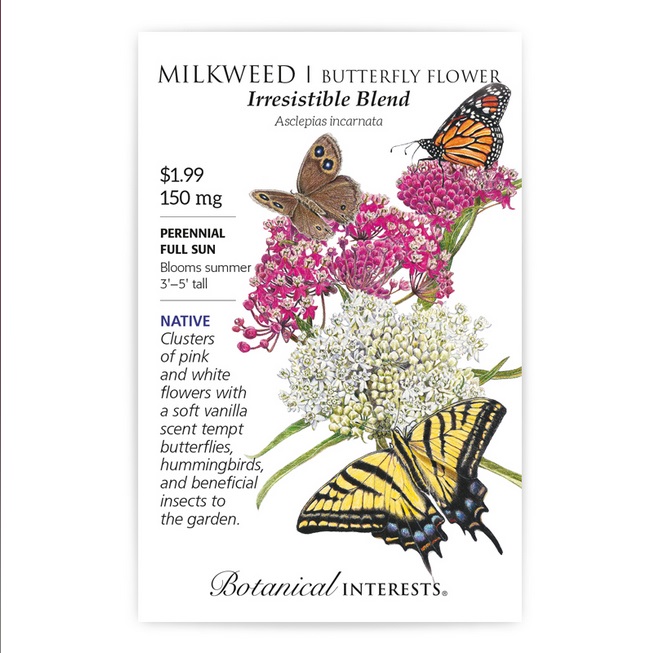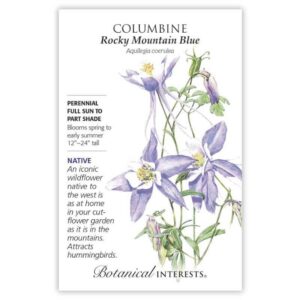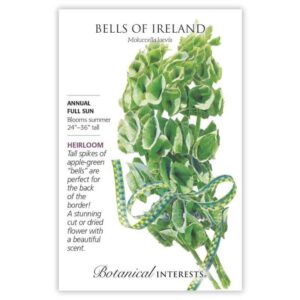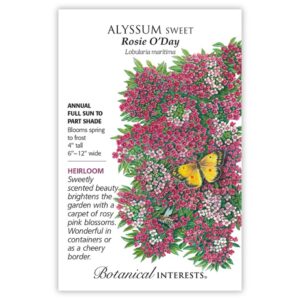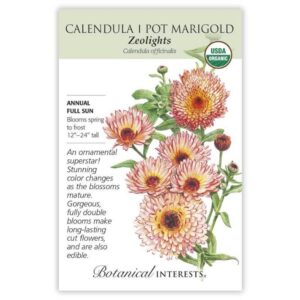Description
Attract butterflies and hummingbirds to your garden with Botanical Interests' Irresistible Blend Milkweed Seeds. This heirloom perennial, also known as swamp milkweed, thrives in moist or wet soils, making it perfect for gardens near ponds or streams. It can also grow successfully with regular watering in garden beds. Reaching 2'–4' tall, with the potential to grow up to 6', this plant features clusters of ½” pink or white flowers that bloom throughout the summer, providing nectar for pollinators. Deer-resistant and low-maintenance, it also produces decorative seed pods that make beautiful additions to dried arrangements. For optimal vase life, cut flowers when 1/2–2/3 of petals are open and sear the stem end with a flame to prevent sap from sealing the stem.
This packet has 24 seeds.
Variety Info:
Botanical Name: Asclepias incarnata
Family: Apocynaceae
Native: Eastern 2/3 of the U.S. and Canada
Hardiness: Perennial in USDA zones 3-6
Plant Dimensions: 2'–4' tall on average but may reach as tall as 6'
Variety Information: Individual flowers ½” long, borne in pink or white clusters
Exposure: Full sun
Bloom Period: Summer
Attributes: Attracts Pollinators, Cut Flowers, Deer Resistant
Sowing Info:
When to Sow Outside: 2 to 4 weeks before your average last frost date, or in the fall for spring germination.
When to Start Inside: 6 to 8 weeks before your average last frost date.
Days to Emerge: 14–28 days
Seed Depth: ¼”
Seed Spacing: A group of 3 seeds every 16″–36″
Thinning: When 3″ tall, thin to 1 every 16″–36″
Growing Info:
Harvesting: For longest vase life, cut flowers when 1/2-2/3 of petals are open. Sear the stem end with a flame to prevent the sap from sealing the stem. Wear gloves; milkweed sap can cause skin and eye irritation and can be toxic if ingested.
